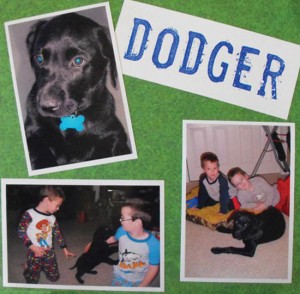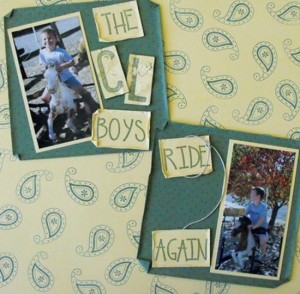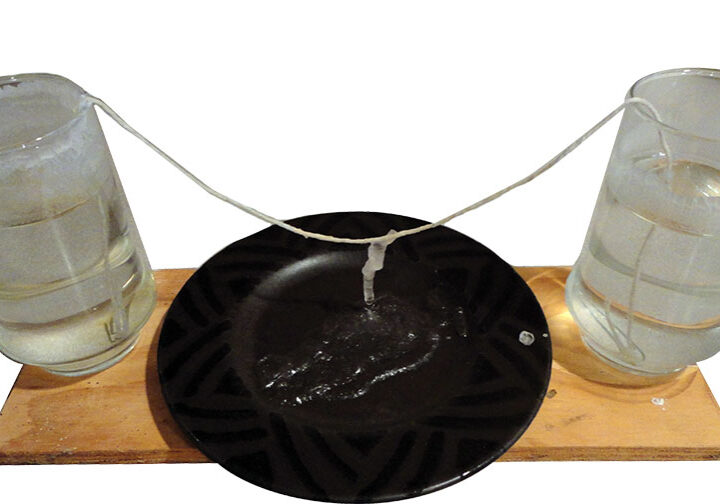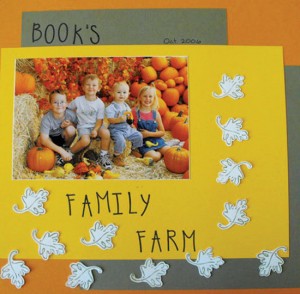 Scrapbooking is a wonderful way to preserve your most cherished photographs and memories. It allows you to share the precious events of your lifetime with those you love. Immortalize your child’s first steps, first day of school and high school graduation, or even laugh at a funny face made for a split second but captured for a lifetime – all with the click of a camera. Taking the time to make a scrapbook allows you to easily enjoy major life achievements, and maybe even some not-so-celebratory moments, but moments to be cherished.
Scrapbooking is a wonderful way to preserve your most cherished photographs and memories. It allows you to share the precious events of your lifetime with those you love. Immortalize your child’s first steps, first day of school and high school graduation, or even laugh at a funny face made for a split second but captured for a lifetime – all with the click of a camera. Taking the time to make a scrapbook allows you to easily enjoy major life achievements, and maybe even some not-so-celebratory moments, but moments to be cherished.
Putting your photos in a scrapbook always seems like such a good idea, and you may have good intentions of starting one, but are intimidated by the thought of all that it may entail. It doesn’t need to be complicated. All you need are a couple of basic scrapbook items and a little bit of time to sit down and recreate the wonderful memories captured on film. The basic materials are easily acquired at any local craft store, specialty scrapbook store, independent direct sales business or even the Internet.
 1. Gather Basic Materials.
1. Gather Basic Materials.
The following are the basic materials needed to decorate scrapbook album pages, trim photographs and secure your memories to the pages:
- Albums come in different sizes and styles. The size all depends on your preference. 8V” x 11″ albums are a popular size because this size of paper works with any printer, scanner or copier. Also, because of its size, it is easier to store on a bookshelf for easy access. The 12″ x 12″ albums are best for larger projects and larger photos. Albums come in three styles: Expandable-spines hold pages together with posts that allow pages to be added or removed easily and keep two-page spreads close together. Three-ring albums are the easiest to arrange, but break up the two-page continuity. Spiral-bound albums have the pages attached permanently and cannot be rearranged.
- Cutting tools are an essential part of the scrapbook supplies. They can be as simple as a pair of good fine-tipped scissors, paper trimmer, circle or oval cutter, or even a craft blade.
- Adhesives include acid-free and nontoxic glue sticks, glue pens or liquid glues, double-sided adhesive tape, and glue dots that are perfect for securing mixed media items.
- Paper is often used for backgrounds, titles and decorations. Basic paper is lightweight and comes in a variety of plain colors and patterns. Cardstock is thick, comes in a variety of colors and is used as the basic background for a scrapbook page. Designer specialty paper ranges from patterned to vellum to handmade.
- Pens are an important part of detailing your memories; use them to journal or document the event you are scrapbooking. It is best to use photo-safe, fade-resistant, permanent, fast drying ink. Pens may also be used to enhance the scrapbook page by coloring and doodling, or to make a title for the page.
- Embellishments are the extra items that are placed on a scrapbook page to help tell the story or enhance the design of the page. Such items may include rubber stamps, brads, eyelets, glitter, stickers or die cuts.
 2. Design your pages.
2. Design your pages.
After getting the basic supplies, it’s time to start designing your pages. One good way to start designing is by going through your photographs and grouping them together. This can be done by the date the photo was taken, the season, an event (ballet recital, baseball game or first baby steps), a holiday, or however you wish to group them. After the grouping is completed, lay all of the photos out together to see an overall view of them, and organize them in a manner that makes sense to you. Once this is done, you can move on to cropping (cutting/trimming) the photos and mounting them with colored or designer paper and securing them to your scrapbook page.
3. Describe the photographs.
Now it’s time to journal and put a title on the page. Sometimes a title is all that is needed to describe what is happening on the page. It can be as simple as one word or a phrase of words. Other times, journaling may be needed to explain in detail what is transpiring on the page. Incorporating the date on the scrapbook page will also help you answer: “When was that?” as you look back at it one day.
4. Enjoy!
After you are done with a page, sit back, take a good long look at your creation and congratulate yourself. You have just taken the first steps to starting a scrapbook that you can enjoy for years to come!
Posted in: Art & Music
Comment Policy: All viewpoints are welcome, but comments should remain relevant. Personal attacks, profanity, and aggressive behavior are not allowed. No spam, advertising, or promoting of products/services. Please, only use your real name and limit the amount of links submitted in your comment.
You Might Also Like...

Children’s Choir of Chico
The only thing better than singing is more singing,” said American Jazz singer Ella Fitzgerald. For Fitzgerald, singing was her way up from the hard place that she found herself […]
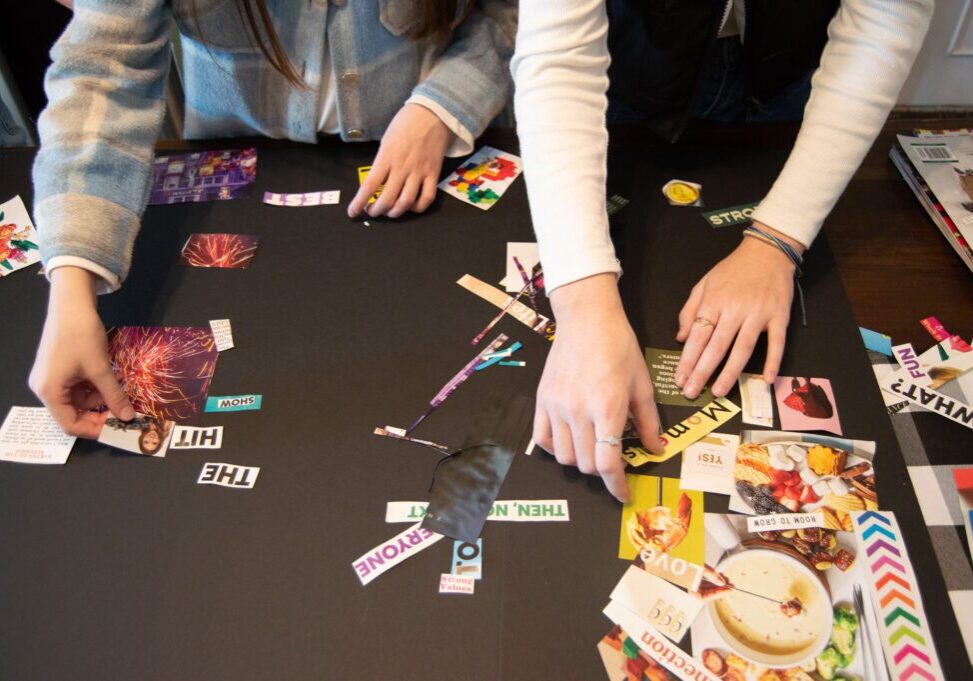
Make a Family Vision Board for the New Year
A vision board — also called a dream board — is a collection of images which represent your goals and dreams for the future. These collages aren’t just pretty to […]

Character Development Through Music – Dealing with Failure and Frustration, and the Keys to Success
In 2011, The New York Times magazine’s educational supplement published an article called “What if the Secret to Success is Failure.” It’s about character education, and how learning to deal with […]
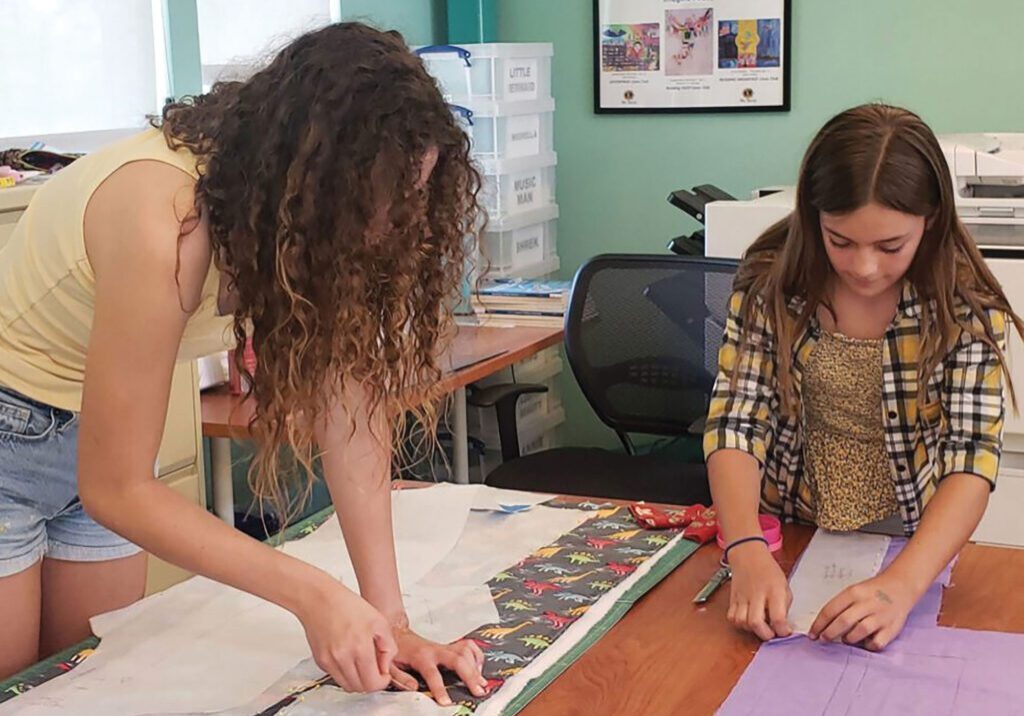
More Than What It Seams: What Your Child Could Gain from Learning to Sew
When I went to middle and high school, (many years ago when dinosaurs roamed the Earth), public schools offered not just home economics classes but actual sewing classes. I even […]
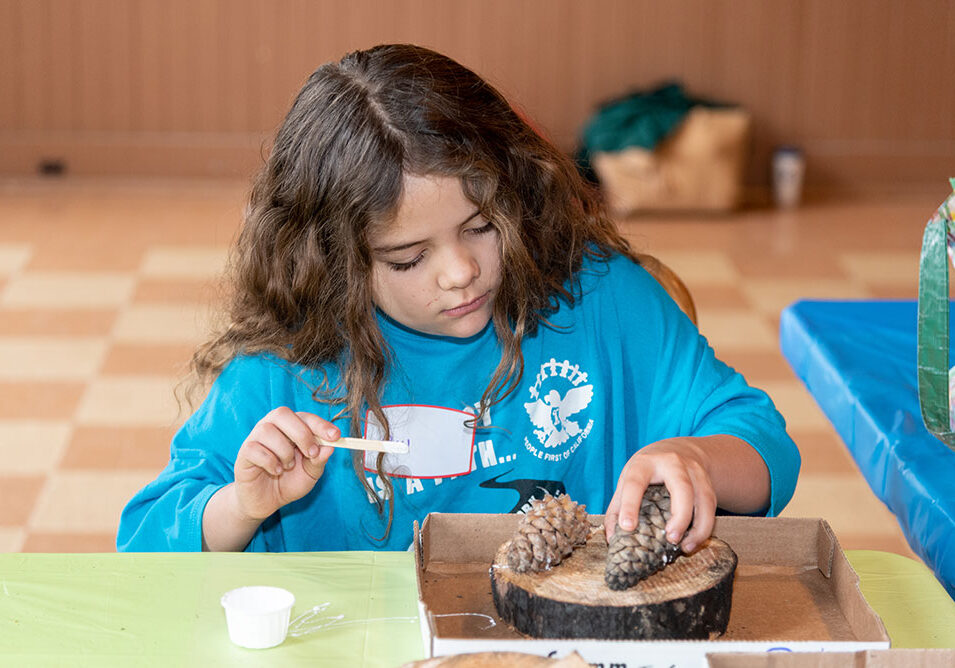
ART from Ashes Youth Workshops
During the wildfire season of 2007, over 9,000 separate wildfires burned approximately 1.5 million acres in California. Out of this devastation the nonprofit ART from the Ashes (artfromtheashes.org) was created. […]


